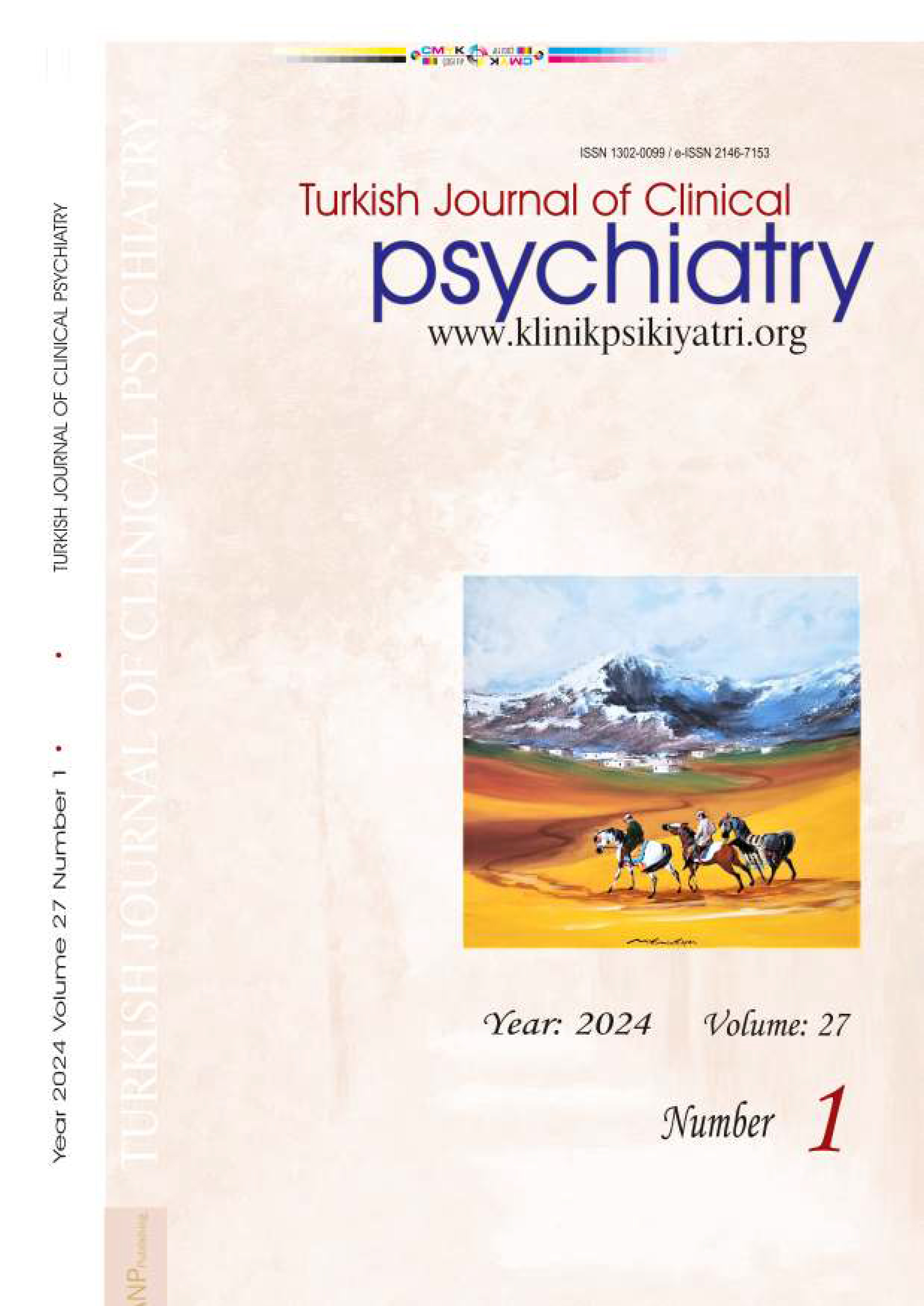
Diagnosis and Differantial Diagnosis of Dissociative Disorder
Merve Çıkılı Uytun1, Rabia Durmuş2, Didem Behice Öztop31Yaşam Özel Aile Danışma Merkezi2Özel Danışma Merkezi, İzmir
3Boylam Psikiyatri Enstitüsü
It is known that there is a relationship between many psychiatric disorder and childhood trauma history. Dissociative disorders are most often investigated disor- ders. The common theme shared by dissociative disor- ders is a partial or complete loss of normal integration between memories of the past, awareness of identity, and immediate sensations and control of bodily move- ments. This group of illnesses also lacks the evidence of proximate organic illness or pathophysiological distur- bance, and the symptoms correspond to the ideas of the patient about how parts of body or mind malfunction or fail to function. The most important feature of dissco- ciative disorders that these disorders can affect almost every psychological function. The main features of this psychopathology includes that dissociative amnesia, depersonalization, derealization, confusion of identity and changing of identity. A number of psychiatric disor- ders, including personality disorders, either have disso- ciative disorder comorbidity or contain dissociative symptoms in their diagnostic criteria. Therefore, It is important that diagnose and diffreantial diagnose with dissociative disorders should make carefully. International Classification of Diseases (ICD-10) and Diagnostic and Statistical Manual of Mental DisordersIt is known that there is a relationship between many psychiatric disorder and childhood trauma history. Dissociative disorders are most often investigated disor- ders. The common theme shared by dissociative disor- ders is a partial or complete loss of normal integration between memories of the past, awareness of identity, and immediate sensations and control of bodily move- ments. This group of illnesses also lacks the evidence of proximate organic illness or pathophysiological distur- bance, and the symptoms correspond to the ideas of the patient about how parts of body or mind malfunction or fail to function. The most important feature of dissco- ciative disorders that these disorders can affect almost every psychological function. The main features of this psychopathology includes that dissociative amnesia, depersonalization, derealization, confusion of identity and changing of identity. A number of psychiatric disor- ders, including personality disorders, either have disso- ciative disorder comorbidity or contain dissociative symptoms in their diagnostic criteria. Therefore, It is important that diagnose and diffreantial diagnose with dissociative disorders should make carefully. International Classification of Diseases (ICD-10) and Diagnostic and Statistical Manual of Mental Disorders (DSM-IV-TR) can be use for diagnose of dissociative dis- orders. In spite of the differences between nosological status, the basic themes remain unchanged. In this con- text, our patient who after a trauma experienced in childhood and we confused about this patient's current diagnosis are explained. (DSM-IV-TR) can be use for diagnose of dissociative dis- orders. In spite of the differences between nosological status, the basic themes remain unchanged. In this con- text, our patient who after a trauma experienced in childhood and we confused about this patient's current diagnosis are explained.
Keywords: Key Words: Dissociation, conversion, childhood trauma.Dissosiyatif Bozuklukta Tanı ve Ayırıcı Tanı: Olgu Sunumu
Merve Çıkılı Uytun1, Rabia Durmuş2, Didem Behice Öztop31Yaşam Özel Aile Danışma Merkezi2Özel Danışma Merkezi, İzmir
3Boylam Psikiyatri Enstitüsü
Çocukluk çağı travma öyküsünün, bir çok psikiyatrik hastalık ile ilişkisi olduğu bilinmektedir. Dissosiyatif bozukluklar, en çok üzerinde durulan bozukluklardandır. Dissosiyatif bozukluklarda paylaşılan ortak tema geçmişe ait belleğin, kimliğin farkında oluşun ve bedenden gelen duyumlarla bedensel hareketlerin kontrolü arasındaki normal entegrasyonun kısmi veya tam kaybıdır. Bu hastalık grubunda bir organik hastalık ya da patofizyolo- jik bozukluğa ait kanıtlar da yoktur ve belirtiler beden veya akıl işlevinin nasıl bozulacağı veya işlev görmeye- ceğine ilişkin hastanın düşüncelerine karşılık gelir. Dissosiyatif bozuklukların en önemli özelliği neredeyse her ruh fonksiyonunu etkileyebilmesidir. Dissosiyatif amnezi, depersonalizasyon, derealizasyon, kimlik bocala- ması ve kimlik değişikliği dissosiyatif psikopatolojinin temel özellikleridir Dissosiyatif bozukluklar kişilik bozuk- lukları dahil bir çok psikiyatrik bozukluğa eşlik edebilir veya psikiyatrik bozuklukların belirtileri içinde bulunabilir. Bu nedenle doğru tanının konulması ve ayırıcı tanının dikkatle yapılması önemli bir konudur. Dissosiyatif bozukluklara tanı koymakta ise Uluslararası Hastalık Sınıflandırması (ICD-10) ve Psikiyatride Hastalıkların Tanısal ve istatistiksel Sınıflandırması El Kitabı (DSM-lV- TR) kullanılmaktadır. ICD-10 ve DSM-lV-TR' de nozolojik durum açısından farklılıklar olmakla birlikte temel temalar değişmemiştir. Bu çerçevede çocukluk çağında yaşadığı bir travma sonrası dissosiasyon semptomları olan hasta üzerinden dissosiyatif bozuklukta ayırıcı tanı anlatılacaktır.
Anahtar Kelimeler: Anahtar Sözcükler: Dissosiasyon, konversiyon, çocukluk çağı travması.Manuscript Language: English
(10752 downloaded)




